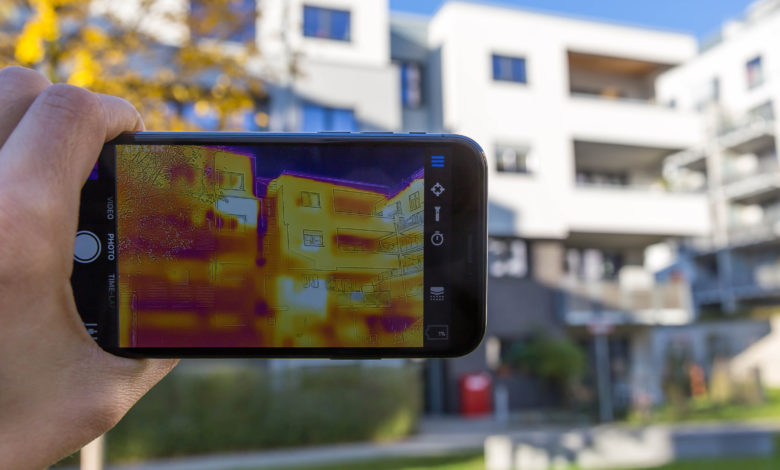
Thermal energy is not visible to the human eye but makes up a great deal of the light emitted by the sun, similar to ultraviolet light. It is an infrared light that radiates off of the surface of any material, the warmer this material is, the more infrared it radiates which is why through the lens of an infrared, a person will give off a different color to an object such as a table or a chair.
Everything on the infrared spectrum is measured in heatwaves, and this is how infrared technology is able to pick up colors and imagery that we cannot. Based on the hot or cold surface temperature of the object, hotter surfaces appear as colors such as red, yellow, or orange, and colder surfaces appear as blue and green.
So, whilst hot charcoals give off no visible light, they do give off heat, and it is this that we can harness in order to capture thermal imagery.
The features of an infrared camera
A thermal/infrared camera can record a light that cannot be seen naturally, which is of course only true for us, as snakes and frogs have no trouble detecting infrared radiation.
Infrared radiation is emitted exclusively through a thermal activity which means infrared imaging cameras can pick up even the color of an Ice Cube. This allows for camera equipment to create a photographic visualization of an infrared world.
Thermal cameras use microbolometers, a specific type of bolometer used only in the detection of thermals, that work inside the camera to capture infrared radiation. This is essentially just the heat coming off an object and is called the heat signature.
From there, the camera is able to identify a specific temperature and assign it a color to create a thermogram. This means that if a 160 x 120 resolution camera picks up 19.2 thousand pixels, that means it has distinguished 19.2 thousand differences in temperature.
The two most important features of a thermal imaging camera are thermal sensitivity and detector resolution. An ordinary camera can reach resolutions of 1600 x 1200, however, because infrared cameras detect heat, the resolution is relatively low with the greatest being around 640 x 480.
A good thermal imaging camera will have an extremely high thermal sensitivity. This would count as the smallest difference in temperature that the camera could differentiate, such as a difference of 0.5 degrees.
What is thermal imaging best used for
Much like the use of night vision, thermal imaging has its perks. Originally used during the Korean war for scouting enemies and identifying combat, the uses of thermal imagery have come a long way.
Police use thermal imaging to identify and detect activity from infrared camera equipment in helicopters. The thermal imagery allows for police to see people who would otherwise be camouflaged as thermal imagery can easily differentiate a person from their surroundings.
Firefighters can use thermal imaging to see through smoke, infrared can identify and captures heat from the hottest parts of burning buildings. This allows firefighters to identify hot spots and localize fires.
Law enforcement further takes advantage of thermal imaging as with maintaining the observation of inmates, managing surveillance, and most importantly, investigating crime scenes.
It’s clear to see that thermal imaging has gifted us the ability to see into an aspect of our environment that would otherwise be out of reach. Paving the way for both the protection and advancement of mankind.
Uncovering invisible dangers
The use of thermal imaging can be clearly utilised in industries that require greater points of sight. As mentioned, military, firefighters, and law enforcement rely upon it.
Uniquely to the on-going pandemic that we face today, is the appliance of thermal activity to the detection of COVID-19. Airports are taking it under their wing as huge centers such as Heathrow begin trials for thermal imagery to detect elevated body temperatures. This is in the hope that the virus can be detected in the body temperature of each person, as well as the added bonus of face identity and recognition. Essentially, thermal imagery could identify who the person is and whether or not they have the virus.
Whilst thermal imagery cannot specifically detect a virus or an illness, it can certainly assist in identifying its symptoms.




